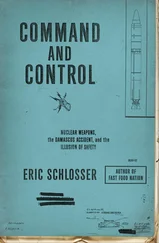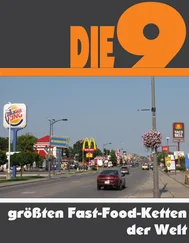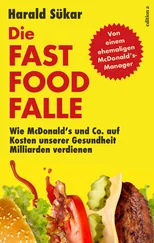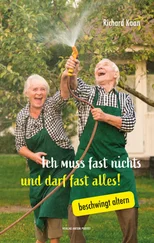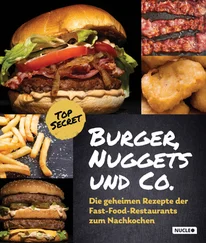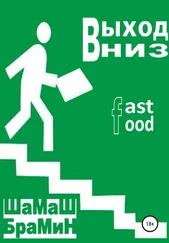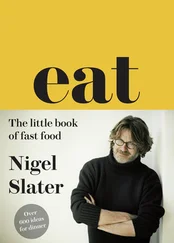The story of Harland Sanders is perhaps the most remarkable. Sanders left school at the age of twelve, worked as a farm hand, a mule tender, and a railway fireman. At various times he worked as a lawyer without having a law degree, delivered babies as a part-time obstetrician without having a medical degree, sold insurance door to door, sold Michelin tires, and operated a gas station in Corbin, Kentucky. He served home-cooked food at a small dining-room table in the back, later opened a popular restaurant and motel, sold them to pay off debts, and at the age of sixty-five became a traveling salesman once again, offering restaurant owners the “secret recipe” for his fried chicken. The first Kentucky Fried Chicken restaurant opened in 1952, near Salt Lake City, Utah. Lacking money to promote the new chain, Sanders dressed up like a Kentucky colonel, sporting a white suit and a black string tie. By the early 1960s, Kentucky Fried Chicken was the largest restaurant chain in the United States, and Colonel Sanders was a household name. In his autobiography, Life As I Have Known It Has Been “Finger-lickin’ Good ,” Sanders described his ups and downs, his decision at the age of seventy-four to be rebaptized and born again, his lifelong struggle to stop cursing. Despite his best efforts and a devout faith in Christ, Harland Sanders admitted that it was still awfully hard “not to call a no-good, lazy, incompetent, dishonest s.o.b. by anything else but his rightful name.”
For every fast food idea that swept the nation, there were countless others that flourished briefly — or never had a prayer. There were chains with homey names, like Sandy’s, Carrol’s, Henry’s, Winky’s, and Mr. Fifteen’s. There were chains with futuristic names, like the Satellite Hamburger System and Kelly’s Jet System. Most of all, there were chains named after their main dish: Burger Chefs, Burger Queens, Burgerville USAs, Yumy Burgers, Twitty Burgers, Whata-burgers, Dundee Burgers, Biff-Burgers, O.K. Big Burgers, and Burger Boy Food-O-Ramas.
Many of the new restaurants advertised an array of technological wonders. Carhops were rendered obsolete by various remote-control ordering systems, like the Fone-A-Chef, the Teletray, and the Electro-Hop. The Motormat was an elaborate rail system that transported food and beverages from the kitchen to parked cars. At the Biff-Burger chain, Biff-Burgers were “roto-broiled” beneath glowing quartz tubes that worked just like a space heater. Insta-Burger-King restaurants featured a pair of “Miracle Insta Machines,” one to make milk shakes, the other to cook burgers. “Both machines have been thoroughly perfected ,” the company assured prospective franchisees, “are of foolproof design — can be easily operated even by a moron.” The Insta-Burger Stove was an elaborate contraption. Twelve hamburger patties entered it in individual wire baskets, circled two electric heating elements, got cooked on both sides, and then slid down a chute into a pan of sauce, while hamburger buns toasted in a nearby slot. This Miracle Insta Machine proved overly complex, frequently malfunctioned, and was eventually abandoned by the Burger King chain.
The fast food wars in southern California — the birthplace of Jack in the Box, as well as McDonald’s, Taco Bell, and Carl’s Jr. — were especially fierce. One by one, most of the old drive-ins closed, unable to compete against the less expensive, self-service burger joints. But Carl kept at it, opening new restaurants up and down the state, following the new freeways. Four of these freeways — the Riverside, the Santa Ana, the Costa Mesa, and the Orange — soon passed through Anaheim. Although Carl’s Jr. was a great success, a few of Carl’s other ideas should have remained on the drawing board. Carl’s Whistle Stops featured employees dressed as railway workers, “Hobo Burgers,” and toy electric trains that took orders to the kitchen. Three were built in 1966 and then converted to Carl’s Jr. restaurants a few years later. A coffee shop chain with a Scottish theme also never found its niche. The waitresses at “Scot’s” wore plaid skirts, and the dishes had unfortunate names, such as “The Clansman.”
The leading fast food chains spread nationwide; between 1960 and 1973, the number of McDonald’s restaurants grew from roughly 250 to 3,000. The Arab oil embargo of 1973 gave the fast food industry a bad scare, as long lines at gas stations led many to believe that America’s car culture was endangered. Amid gasoline shortages, the value of McDonald’s stock fell. When the crisis passed, fast food stock prices recovered, and McDonald’s intensified its efforts to open urban, as well as suburban, restaurants. Wall Street invested heavily in the fast food chains, and corporate managers replaced many of the early pioneers. What had begun as a series of small, regional businesses became a fast food industry, a major component of the American economy.
IN 1976, THE NEW HEADQUARTERS of Carl Karcher Enterprises, Inc. (CKE) was built on the same land in Anaheim where the Heinz farm had once stood. The opening-night celebration was one of the high points of Carl’s life. More than a thousand people gathered for a black-tie party at a tent set up in the parking lot. There was dinner and dancing on a beautiful, moonlit night. Thirty-five years after buying his first hot dog cart, Carl Karcher now controlled one of the largest privately owned fast food chains in the United States. He owned hundreds of restaurants. He considered many notable Americans to be his friends, including Governor Ronald Reagan, former president Richard Nixon, Gene Autry, Art Linkletter, Lawrence Welk, and Pat Boone. Carl’s nickname was “Mr. Orange County.” He was a benefactor of Catholic charities, a Knight of Malta, a strong supporter of right-to-life causes. He attended private masses at the Vatican with the Pope. And then, despite all the hard work, Carl’s luck began to change.
During the 1980s CKE went public, opened Carl’s Jr. restaurants in Texas, added higher-priced dinners to the menu, and for the first time began to expand by selling franchises. The new menu items and the restaurants in Texas fared poorly. The value of CKE’s stock fell. In 1988, Carl and half a dozen members of his family were accused of insider trading by the Securities and Exchange Commission (SEC). They had sold large amounts of CKE stock right before its price tumbled. Carl vehemently denied the charges and felt humiliated by the publicity surrounding the case. Nevertheless, Carl agreed to a settlement with the SEC — to avoid a long and expensive legal battle, he said — and paid more than half a million dollars in fines.
During the early 1990s, a number of Carl’s real estate investments proved unwise. When new subdivisions in Anaheim and the Inland Empire went bankrupt, Carl was saddled with many of their debts. He had allowed real estate developers to use his CKE stock as collateral for their bank loans. He became embroiled in more than two dozen lawsuits. He suddenly owed more than $70 million to various banks. The falling price of CKE stock hampered his ability to repay the loans. In May of 1992, his brother Don — a trusted adviser and the president of CKE — died. The new president tried to increase sales at Carl’s Jr. restaurants by purchasing food of a lower quality and cutting prices. The strategy began to drive customers away.
As the chairman of CKE, Carl searched for ways to save his company and pay off his debts. He proposed selling Mexican food at Carl’s Jr. restaurants as part of a joint venture with a chain called Green Burrito. But some executives at CKE opposed the plan, arguing that it would benefit Carl much more than the company. Carl had a financial stake in the deal; upon its acceptance by the board of CKE, he would receive a $6 million personal loan from Green Burrito. Carl was outraged that his motives were being questioned and that his business was being run into the ground. CKE now felt like a much different company than the one he’d founded. The new management team had ended the longtime practice of starting every executive meeting with the prayer of St. Francis of Assisi and the pledge of allegiance to the flag. Carl insisted that the Green Burrito plan would work and demanded that the board of directors vote on it. When the board rejected the plan, Carl tried to oust its members. Instead, they ousted him. On March 1, 1993, CKE’s board voted five to two to fire Carl N. Karcher. Only Carl and his son Carl Leo opposed the dismissal. Carl felt deeply betrayed. He had known many of the board members for years; they were old friends; he had made them rich. In a statement released after the firing, Carl described the CKE board as “a bunch of turncoats” and called it “one of the saddest days” of his life. At the age of seventy-six, more than five decades after starting the business, Carl N. Karcher was prevented from entering his own office, and new locks were put on the doors.
Читать дальше


